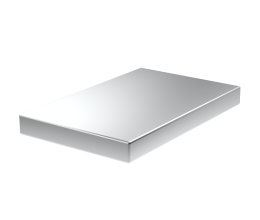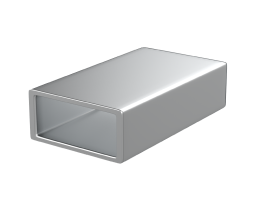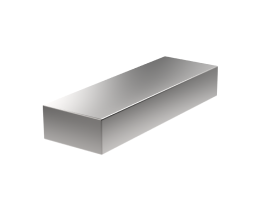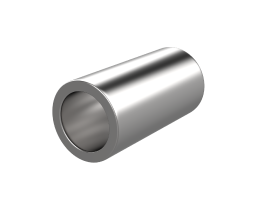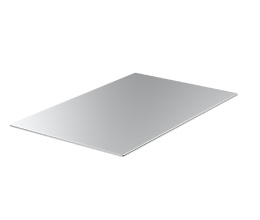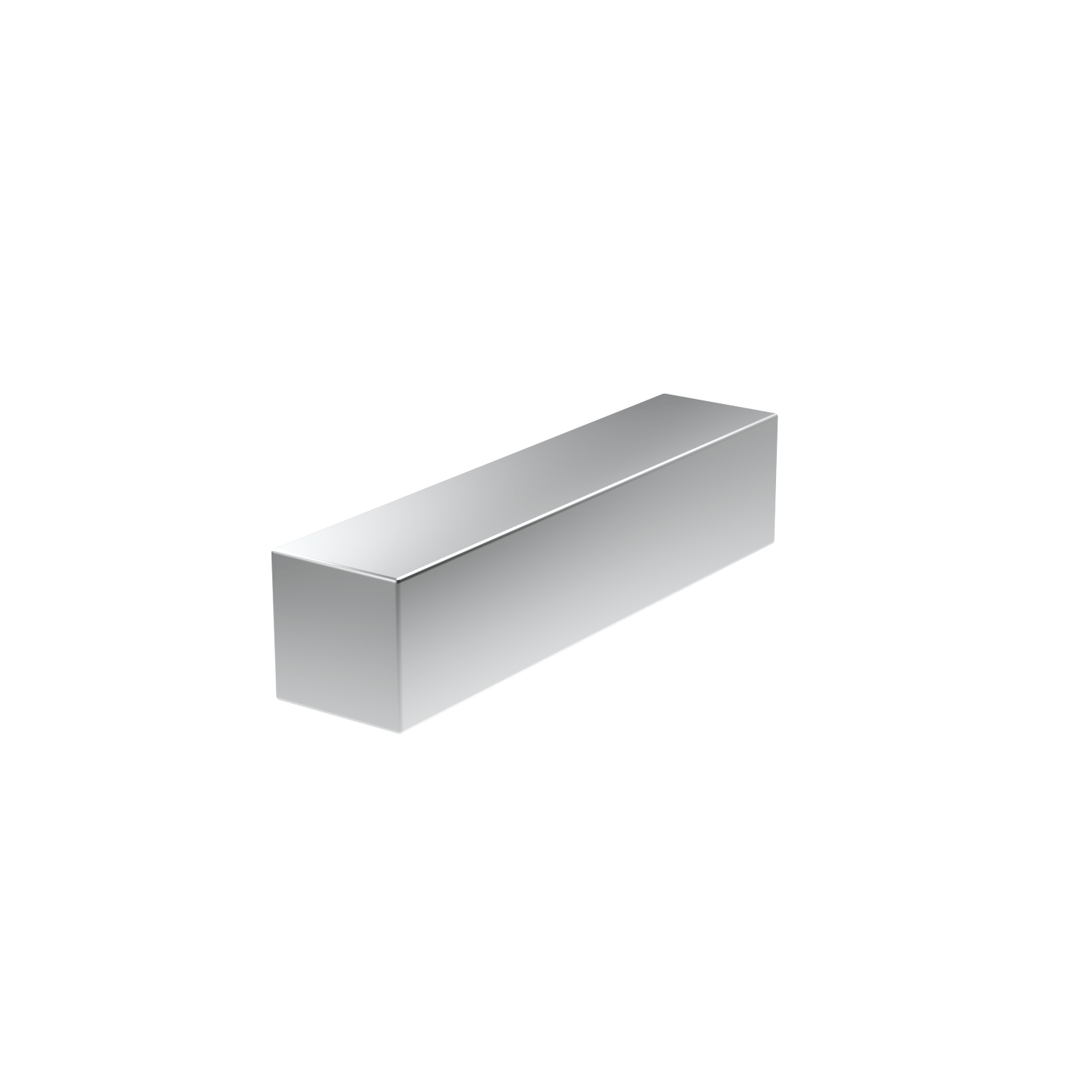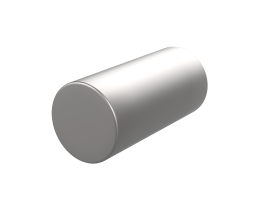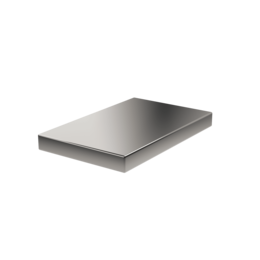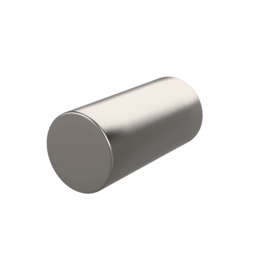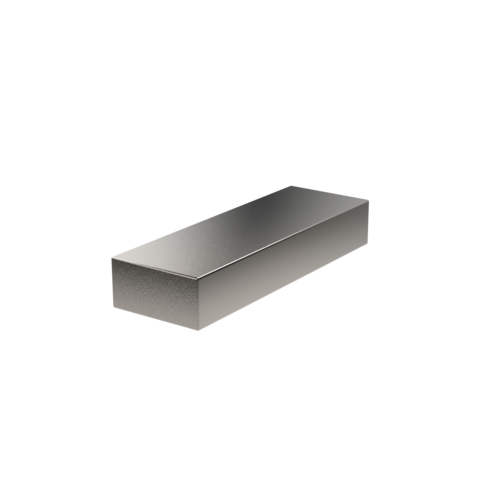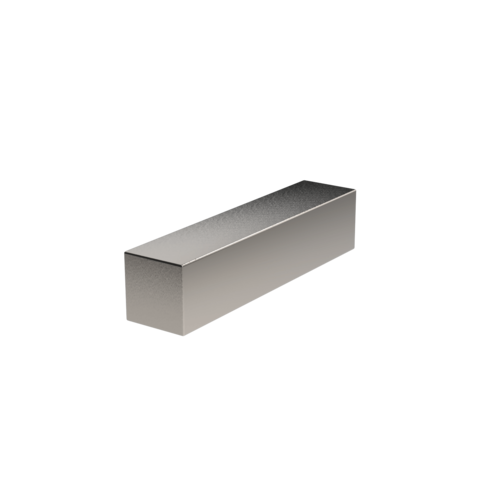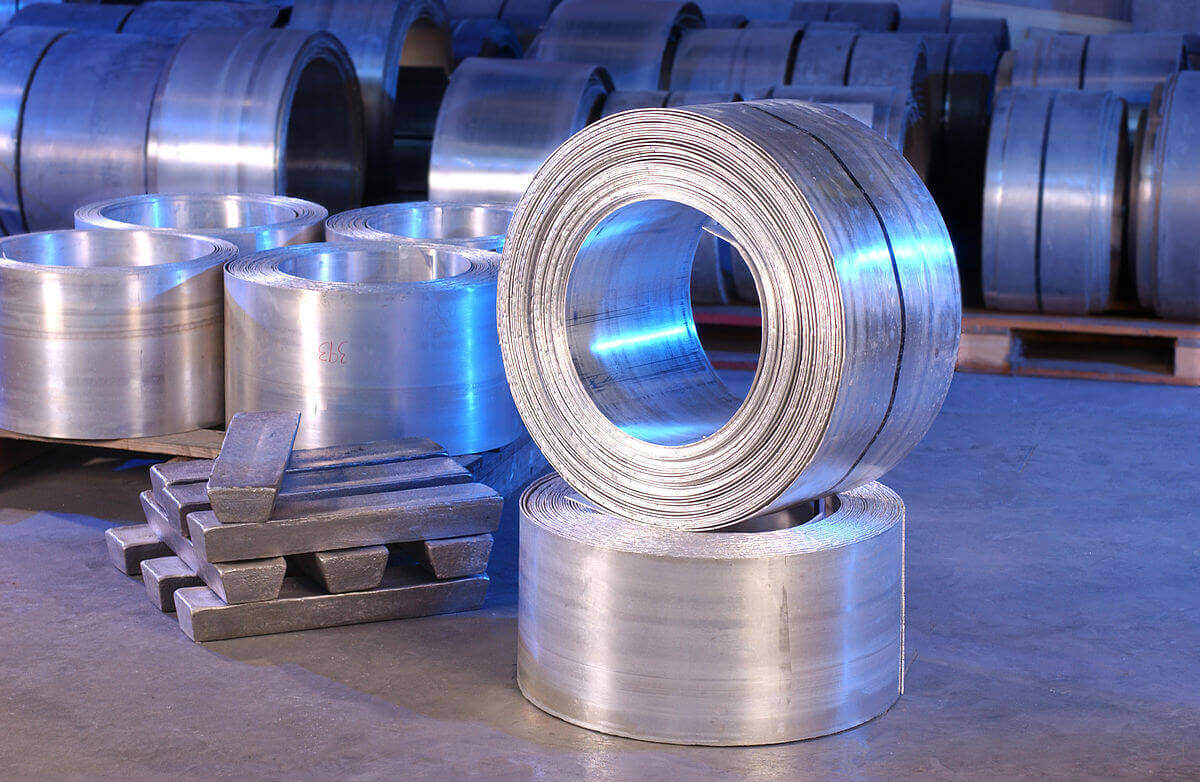The choice between hot-rolled and cold-rolled metal is a critical decision that significantly impacts the product’s performance, durability, and versatility. Choosing the right process can save energy costs and prevent the waste of raw materials. While both hot-rolled and cold-rolled steel have advantages and disadvantages, your choice depends on the project’s specific requirements.
Hot-rolled steel is preferred for structural components, welding and construction materials, and automotive parts. Its lower cost and faster production time make it a popular choice for large-scale projects.
On the other hand, cold-rolled steel finds its niche in applications that prioritize surface finish, dimensional accuracy, and consistency. It’s commonly used in automotive manufacturing, mass-production appliances, furniture, and precision engineering industries.
Understanding the distinctions between hot-rolled and cold-rolled steel is crucial for anyone navigating the vast landscape of steel products. Let’s look at the two processes in length.
What Is Hot Rolled Steel?
Hot rolling involves the following:
- Heating the steel above its recrystallization temperature
- Temperature of around 1,700° F (926.7° C)
- Passing it through a series of rollers to shape it into the desired form.
The hot rolling process results in steel with a rugged, textured surface and a wide range of mechanical properties. Hot-rolled steel is known for its flexibility and elasticity, making it suitable for high-strength and versatile applications.
Properties of Hot Rolled Steel
Consider the following properties of hot-rolled steel:
- Strength: Hot-rolled steel typically has good mechanical strength properties, making it suitable for various applications. It’s generally stronger than cold-rolled steel.
- Ductility: Hot-rolled steel is known for its excellent flexibility, allowing it to be easily formed into various shapes without cracking or breaking.
- Toughness: Hot-rolled steel exhibits good toughness, which means it can withstand impact and resist deformation under stress.
- Surface finish: Hot-rolled steel has a rougher surface finish than cold-rolled steel. The hot rolling process doesn’t involve additional surface finishing steps.
- Grain structure: The hot rolling process affects the grain structure of the steel, bringing about a larger grain size than cold rolled steel. This impacts the mechanical properties of the steel.
- Cost: Hot-rolled steel is generally more cost-effective than cold-rolled steel, making it a popular choice for applications where cost is a factor.
- Weldability: Hot-rolled steel is generally easy to weld, making it suitable for various fabrication processes.
Benefits of Hot Rolled Steel
Hot-rolled steel has several benefits, making it a popular choice in many industries. The following are some of these advantages:
- Easy to form: It’s more malleable, which forces it into a variety of different shapes. This makes it ideal for structural and construction projects that require a particular desired shape.
- Versatile: It can be used for a variety of applications, including railroad tracks, door frames, automotive parts, and highway signs.
- Speed of production: As hot-rolled steel doesn’t require the same level of processing as cold-rolled steel, it can be produced faster, which is a significant advantage in large-scale manufacturing situations.
- Better performance in high temperatures: Hot-rolled steel performs well, which can be crucial in specific applications.
- Improved tensile strength: The hot rolling process improves the tensile strength and durability of the steel, making it less likely to break under pressure and internal stresses.
Buy Certified High-Quality Metals for Industrial Solutions | ||
New Aluminum | New Steel | New Stainless Steel |
 |  | 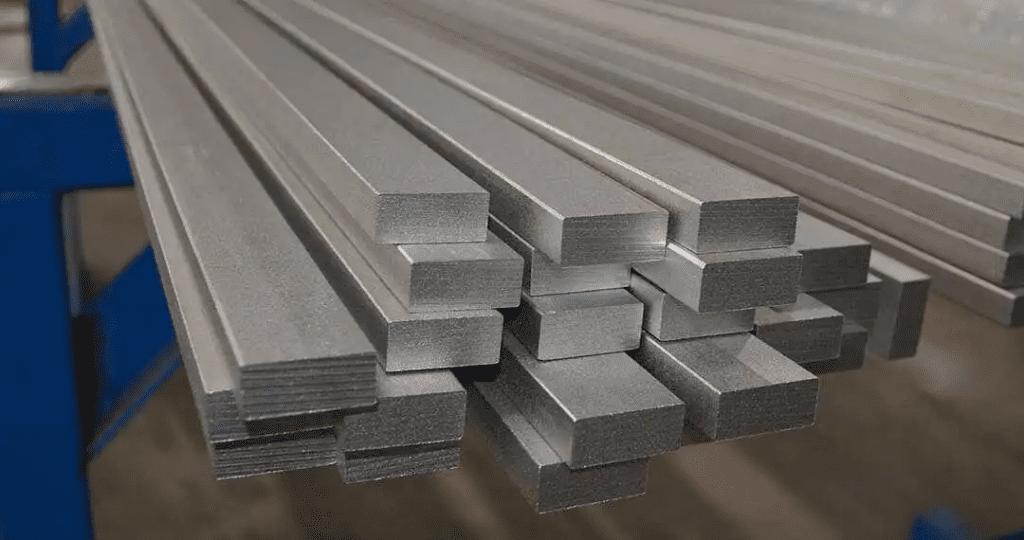 |
| Reliable supply: Consistent, certified aluminum stock you can trust. High-quality material: Superior-grade aluminum for precision needs. Custom cuts: Accurate cuts down to thousandths of an inch. | Durability and strength: Reliable for projects needing long-lasting, tough materials. Cost-effective: Quality steel that offers strength without breaking the bank. Custom cutting: Precise cuts tailored to exact needs with top-tier cutting tools. | Sustainability: Highly eco-friendly as the most recyclable metal on earth. High durability: Resistant to corrosion and wear, ensuring long-lasting performance. Custom precision cuts: Tailored to your specifications with quick, accurate results. |
The Downsides of Hot Rolled Steel
Hot-rolled steel can be disadvantageous because of the following reasons:
- It has a rougher surface finish
- It has less precise finishing dimensions
- It’s more difficult to form
- It’s less robust than cold-rolled steel
What Is Cold Rolled Steel?
Cold rolling involves passing the steel through rollers at temperatures below its recrystallization temperature (usually room temperature) and applying pressure to deform and shape it. This process produces tougher steel with a smoother surface finish for a polished appearance and tighter dimensional tolerances.
Cold-rolled steel is renowned for its excellent surface finishes and precise dimensions. This makes it ideal for applications that demand a superior aesthetic appearance and tight dimensional control.
Properties of Cold Rolled Steel
Some typical properties of cold-rolled steel include the following:
- Smooth surface: Cold rolling improves surface imperfections and scale, resulting in a smooth and clean surface finish. The smooth finish makes cold rolled steel suitable for applications where appearance is essential, such as automotive body panels or appliances with a unique final shape.
- Increased strength: Cold rolling increases the strength of the steel by reducing its thickness and aligning the grains. This makes cold rolled steel suitable for applications that require high strength, such as structural components or machinery parts.
- Improved dimensional accuracy: Cold rolling improves the steel’s dimensional accuracy, making it more uniform and consistent in thickness. This makes cold-rolled steel suitable for applications that require tight tolerances, such as precision engineering or electrical components.
- Better formability: Cold-rolled steel is better than hot-rolled steel, meaning it can be easily shaped and formed without cracking or breaking from pressure and internal stresses. This makes cold rolled steel suitable for applications that require complex shapes or tight bends, such as furniture or automotive parts.
- Greater hardness: Cold rolling can increase the steel’s hardness, making it more resistant to wear and abrasion. Cold-rolled steel has the physical characteristics for applications requiring durability and damage resistance, such as tools or machine components.
Benefits of Cold Rolled Steel
Here are some of the key benefits of cold-rolled steel:
- Improved surface finish: Cold rolling produces a smoother, more polished surface than hot-rolled steel. This results in a better aesthetic appearance, making it suitable for applications where appearance matters, such as automotive and appliances.
- Tight tolerances: Cold-rolled steel can be manufactured with precise dimensions and tight tolerances. This makes it suitable for applications where accurate shapes and sizes are crucial, such as producing precision components.
- Increased strength: The cold-rolling process increases the strength of the steel. The process hardens the steel, improving its mechanical properties, such as hardness and tensile strength. Cold-rolled steel is often used in applications that require high strength, such as construction and structural components.
- Better formability: Cold-rolled steel has better formability compared to hot-rolled steel. It’s easily manipulated into various shapes without compromising its structural integrity. This makes it the right steel for applications that require complex shapes, such as sheet metal manufacturing.
- Dimensional consistency: Cold rolling ensures consistent thickness and dimensional accuracy across the entire length of the steel sheet or coil. This makes it easier to work with in manufacturing processes and ensures that the final product meets desired dimensions and specified standards.
- Reduced risk of warping: Cold-rolled steel is less prone to warping during the cooling process than hot-rolled steel. This characteristic makes it suitable for applications where flatness and stability are essential, such as in producing flat-rolled products.
- Surface quality: Cold-rolled steel typically has a cleaner and more uniform surface, with fewer imperfections and scale than hot-rolled steel. It’s advantageous in critical surface-quality applications, such as producing exposed automotive panels or appliances.
The Downsides of Cold Rolled Steel
Cold-rolled steel can be disadvantageous because of its:
- Higher cost
- Limited thickness
- Potential for residual stress
Main Differences Between Hot Rolled Steel and Cold Rolled Steel
Hot-rolled and cold-rolled steel are two distinct forms of steel processing. Here are their key differences:
Production Process
Hot-rolled steel is typically less expensive than cold-rolled steel. This is because the hot rolling process involves rolling steel at high temperatures, where it can be shaped and formed more easily. It doesn’t require the steel to be reheated, saving energy costs. The process is also less labor-intensive and has a faster production rate, contributing to lower costs.
Cold-rolled steel, on the other hand, involves additional processing steps. After the steel is hot rolled, it’s cooled to room temperature and then re-rolled at room temperature to achieve more precise dimensions and better surface qualities. This extra processing increases the strength and hardness of the steel but also adds to the production costs due to the additional labor and time involved in the process. Cold rolling can also require more energy to achieve the desired deformation because the steel is not as malleable at room temperature as it is when hot.
Applications
Hot-rolled steel is often used in construction and applications where precise shapes and tolerances are optional. It’s commonly used for railroad tracks, beams, agricultural equipment, and other applications where the steel will be hidden or where surface finishes and exact dimensions aren’t critical.
Cold-rolled steel is preferred for more precise applications such as automotive parts, home appliances, and metal furniture. It’s also used for parts that require a good surface finish and tight tolerances.
Surface Finish
Generally, hot rolled steel has a rougher, more scaled surface finish that can also include slight distortions and non-uniformities in shape. The cooling process can result in shrinkage and slightly less precise dimensional accuracy.
Cold-rolled steel features a much smoother, more polished, and aesthetically pleasing finish. Since the cold rolling process is more precise, the steel has a more uniform and predictable shape.
Dimensional Accuracy and Strength
While easier to form and shape, the hot rolling process doesn’t achieve the same precision as cold rolling. The end product might have less control over the dimensions, which can vary slightly due to the high temperatures.
Cold-rolled steel offers superior dimensional accuracy and strength due to the additional processing. The steel is often harder and more robust than hot-rolled steel, making it more suitable for precision applications.
Final Thoughts on Hot Rolled vs Cold Rolled Metal
You must consider your specific needs and requirements when choosing between hot-rolled and cold-rolled steel. Hot-rolled steel offers a more cost-effective option with improved malleability and toughness, making it suitable for applications that require shaping or bending.
On the other hand, cold-rolled steel provides a smoother finish, higher dimensional accuracy, and increased strength, making it perfect for applications requiring precise and durable components.
Ultimately, the choice between hot-rolled and cold-rolled steel depends on the intended use, budget, and desired properties. At Industrial Metal Service, we have a wide range of metals in our inventory. From new aluminum to verified remnant stainless steel, we have everything you need for your specific applications. Browse our selections today!
